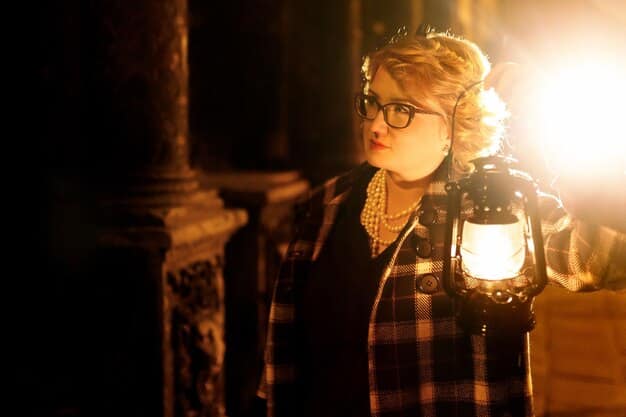Reclaiming the Spotlight: Forgotten Female Directors of Cult Cinema

The history of cult cinema often overlooks the significant contributions of female directors;
this article aims to reclaim their place by highlighting their forgotten classics and exploring the reasons behind
their marginalization.
Cult cinema, often celebrated for its rebellious spirit and unique vision, has a history that frequently overlooks
the contributions of female directors. This article aims to reclaim the spotlight for these forgotten female
directors of cult cinema: reclaiming their place in ‘Forgotten Classics’ history.
Rediscovering the Lost Voices: An Introduction
For decades, the narrative of cult cinema has been largely dominated by male directors, with names like John Waters,
David Lynch, and Alejandro Jodorowsky instantly coming to mind. However, a closer look reveals a wealth of talented
female filmmakers whose works have been unfairly relegated to the margins of cinematic history. This section aims to
introduce some of these pioneering women and set the stage for a deeper exploration of their contributions.
Why have these female directors been so often overlooked? The reasons are manifold, ranging from systemic biases in the film
industry to the challenges of distribution and promotion. Understanding these obstacles is crucial to appreciating the resilience
and creativity of these filmmakers.
The Systemic Bias in the Film Industry
Historically, the film industry has been a male-dominated space, both in front of and behind the camera. This bias
manifests in various ways, including limited access to funding, fewer opportunities for distribution, and a lack of critical
recognition.
- Funding Disparities: Female directors often face greater difficulty securing funding for their projects,
particularly those that challenge conventional norms or explore unconventional themes. - Distribution Challenges: Even when a film is completed, female directors may struggle to secure wide distribution,
leading to limited exposure and fewer opportunities to build a following. - Critical Recognition: Mainstream film criticism has historically favored male directors, sometimes overlooking
or undervaluing the contributions of female filmmakers.
Despite these challenges, many female directors persevered, creating groundbreaking and influential works that deserve recognition
and celebration. Their films offer unique perspectives and challenge traditional cinematic conventions.
Stephanie Rothman: Exploitation with a Feminist Edge
Stephanie Rothman is a name that should be far more widely celebrated in the realm of cult cinema. Her work, often categorized
as exploitation, cleverly subverted genre conventions to explore feminist themes and challenge societal norms. While her films
may not have received mainstream acclaim, they have gained a devoted following for their intelligence and subversive wit.
Rothman’s career spanned the 1960s and 1970s, a period of significant social and political change. Her films reflected this
turmoil, addressing issues of gender inequality, sexual freedom, and the challenges of female empowerment.
Key Films and Their Significance
Rothman directed several notable films, each offering a unique perspective on the female experience. These films often
featured strong female protagonists who defied traditional gender roles and challenged the status quo.
- “Blood Bath” (1966): A horror film that explores themes of identity and artistic obsession.
- “The Velvet Vampire” (1971): A stylish and atmospheric vampire film that subverts traditional gender roles.
- “Terminal Island” (1973): A dystopian action film that explores themes of female solidarity and resistance.
Rothman’s films deserve to be re-evaluated and celebrated for their innovative storytelling and their insightful commentary
on the female experience. Her work is a testament to the power of independent filmmaking and the importance of diverse voices
in cinema.
Barbara Peeters: Horror with a Message
Barbara Peeters is another female director whose contributions to cult cinema have been largely overlooked. Her most famous
film, “Humanoids from the Deep” (1980), is a creature feature that tackles complex social and environmental issues.
Peeters took on “Humanoids from the Deep” after the original director was fired. She attempted to imbue the exploitation film
with a subtext concerning the rape of the environment and the dangers of unchecked corporate greed.
“Humanoids from the Deep”: More Than Just a Monster Movie
“Humanoids from the Deep” is more than just a B-movie creature feature; it is a film with an important message about
environmental responsibility and the exploitation of natural resources.
Here’s a breakdown:
- Environmental Concerns: The film highlights the dangers of pollution and the destruction of marine ecosystems.
- Social Commentary: It also addresses issues of racism, sexism, and the exploitation of marginalized communities.
- Cult Status: Despite its controversial content, “Humanoids from the Deep” has gained a cult following for its
gritty atmosphere and its thought-provoking themes.
Peeters’ influence on the final cut of “Humanoids From The Deep” is disputed, diminishing the authorial claim one can make about
her filmography. Regardless, Peeters career shows the struggles female directors face in imprinting their vision on exploitation
cinema.
Bette Gordon: Exploring Sexuality and Desire
Bette Gordon is an experimental filmmaker known for her provocative exploration of sexuality, desire, and the female gaze.
Her films often challenge conventional cinematic narratives and explore the complexities of human relationships.
Gordon emerged during the New York No Wave Cinema movement, using film to challenge and question assumptions about society
and behavior. With a background as an art critic, Gordon sought to explore the ways media shape our understanding of sexuality
and desire.
“Variety”: A Groundbreaking Examination of the Female Gaze
Gordon made several films, but “Variety” (1983) stands as a particularly significant contribution exploring female psychology and
desire in a unique and compelling way.
Key aspects of “Variety” include:
- Female Perspective: The film offers a female perspective on sexuality and desire, challenging traditional male-dominated views.
- Narrative Experimentation: It also features a non-linear narrative structure that reflects the fragmented nature of human experience.
- Critical Acclaim: “Variety” has been praised by critics for its intelligence, its originality, and its willingness
to challenge conventional norms.
Gordon’s films are not always easy to watch, but they are always thought-provoking and challenging. Her work is a testament to
the power of independent filmmaking and the importance of diverse voices in cinema.
Other Notable Female Directors
While Rothman, Peeters and Gordon are prominent examples, the list of forgotten female directors of cult cinema extends further.
Many other talented women have made significant contributions to the genre, but their work remains largely unknown.
These women often worked within the constraints of low budgets and limited resources, but they managed to create films that
are both entertaining and thought-provoking.
Spotlighting More Visionary Women
Several other female directors deserve recognition for their contributions to cult cinema. Their films offer diverse
perspectives and challenge traditional cinematic conventions.
Some examples of amazing women are:
- Jackie Kong: best known for directing the horror-comedy “Blood Diner” (1987).
- Doris Wishman: A prolific exploitation filmmaker known for her low-budget, sexually-charged films.
By highlighting these forgotten female directors, we can help to ensure that their work is not lost to history. Their films
deserve to be seen, studied, and celebrated for their contributions to cult cinema.
Preserving and Celebrating Their Legacy
Preserving and celebrating the legacy of these forgotten female directors is essential to a more complete and accurate
understanding of cult cinema history. This can be achieved through various means, including film screenings, academic research,
and online platforms.
By making their work more accessible, we can help to ensure that these talented women receive the recognition they deserve.
Ways to Support Female Filmmakers
There are many ways to support female filmmakers, both past and present. By actively seeking out and promoting their work,
we can help to create a more equitable and inclusive film industry.
Here are some options:
- Attend Film Screenings: Support local film festivals and screenings that showcase the work of female directors.
- Share Their Work Online: Use social media to promote their films and share your favorite scenes and quotes.
- Support Film Archives: Contribute to organizations that are dedicated to preserving and restoring films by
female directors.
Let us honor these pioneers, learn from their work, and create a future where female voices are amplified and celebrated in
the world of cult cinema.
| Key Point | Brief Description |
|---|---|
| 🎬 Rediscovering Female Directors |
Exploring the often-overlooked contributions of women in cult cinema. |
| 🌟 Stephanie Rothman | Highlighting Rothman’s exploitation films with feminist themes. |
| 🧜♀️ Barbara Peeters | Discussing her horror film “Humanoids from the Deep” and its social messages. |
| 👁️ Bette Gordon | Exploring Bette Gordon’s experimental films and their provocative themes. |
FAQ
▼
Systemic biases in the film industry, distribution challenges, and a lack of critical recognition have all contributed to
the marginalization of female directors in cult cinema.
▼
Stephanie Rothman’s films blended exploitation elements with feminist themes, challenging societal norms and offering
subversive commentary on gender roles.
▼
“Humanoids from the Deep” touches on environmental concerns, racism, sexism, and the exploitation of marginalized
communities, making it more than just a monster movie.
▼
“Variety” offers a female perspective on sexuality and desire, challenging male-dominated views and featuring a
non-linear narrative structure.
▼
Supporting female filmmakers involves attending film screenings, sharing their work online, and contributing to
organizations that preserve and restore their films, helping create a more equitable industry.
Conclusion
By recognizing and celebrating the contributions of the forgotten female directors of cult cinema: reclaiming their place in ‘Forgotten Classics’ history, we enrich our understanding of film history and promote a more inclusive and equitable cinematic landscape. These women defied expectations and overcame numerous obstacles to create unique and thought-provoking films that deserve to be seen and appreciated by future generations.





